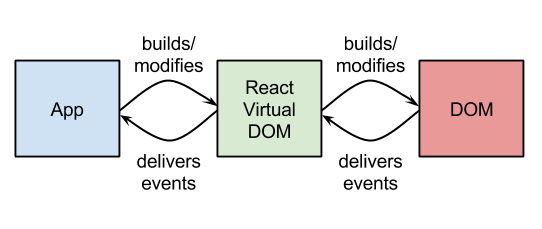Couple of things go unchecked in the world of web development, particularly with regards to the two noteworthy developer frameworks, AngularJS and ReactJS. Kept up by some significant players in the business (AngularJS is kept up by Google, while Facebook deals with ReactJS), both frameworks are easy to use with high-end potential to develop cutting-edge mobile and web applications.
So which is better?
Clearly, both have their advantages and disadvantages (and each developer has their own preferences too). With a goal towards having clarity over both of these frameworks, we should look at the most popular features and functions and what their differences are.
For Each Other or Against Each Other?
Angular’s popularity originates from its capacity to solve numerous issues with building applications that render on a solitary page. Think about the famous online social media applications (Twitter, Instagram and Facebook) for instance: when going by a profile, you can see the feed by looking all over. Angular gives a client side MVC framework that assists with launching/building dynamic applications of cutting edge best in class quality.
Angular is essentially the ideal answer for handling data binding. Data binding in Angular applications includes the automatic synchronization of information between the model (or client input source) and the “view”. At the point when the model (or any variables related with the model) changes, the view reflects the change, and the other way around. By removing numerous steps (and diminishing the amount of code important to make interactions and transitions), Angular can be an exceptionally appealing choice.
As one of the main frameworks, the set of functions and features now supplement the necessities of web developers. The continually developing community helps new developers to get their Angular knowledge up and running rapidly. This makes it especially simple to discover awesome Angular courses, tutorials and guides.
One of the greatest pitfalls of Angular (or any front-end framework, so far as that is concerned) is the prevalence of performance leaks. When it comes to manipulating content, these are always present. For example, when running a huge database (100k+) and a user searches it, they might experience a delay. Weather long or short, it is still a delay, and in modern world of web development — a delay is nothing but lost opportunity.
Let’s turn to React now. ReactJS is an excellent framework for dealing with the DOM (Document Object Model), particularly when managing vast amounts of data. React works by making a virtual DOM in JavaScript that behaves as an intermediate representation of the DOM. This representation makes it simple to choose which components to change in the DOM and what the results might be.

On account of that, it creates the impression that Angular and React are in no way, competing for the top-spot of being the best all-around front-end framework. Rather, they can be utilized together to make amazingly quick web and mobile applications.
Individual Characteristics
Now let’s have a look at the individual features of both frameworks. React will compliment any mobile or web application with a larger-than-usual data subset. Angular is extraordinary for building applications starting from the earliest stage. Together, they can be utilized on a single project.
Running and Deploying
Angular gives a limited scope of tools to package code in a way that we can run and deploy as we like. More often we need to use HTML templates and when you’re finished with it, the code looks archaic, like something out of the 80’s.
React functions from the point of view of native JavaScript, and we can use a library, for example, RequireJS for loading our code. Gratefully, there are numerous similar other solutions that React will support right out the box.
One Day at a Time
The learning curve of Angular is not linear. Get set to try new concepts & ideas to completely experience how every element interacts with each other. On the other hand, React takes just a couple of days to truly understand the ecosystem.
Several developers say it’s a one way street with React – you just need to learn it once. While Angular may at times require of you to read a novel’s worth of code, React won’t require you to do any code reading.
Starting Up the Debugger
The debugger, as usual, is our closest companion. Obviously, there are even differences here amongst Angular and React.
The Angular ecosystem is event driven. This makes the code is simple to write but difficult to debug, as the stack tends to increment and advance into something other than what’s expected. Angular provides constructs that are brilliant and easy to understand and, if used appropriately, can accommodate a more smooth debugging experience.

React, obviously, is different. Get the official React Developer Tools extension for Chrome and you can do all your virtual DOM work without leaving your screen. Likewise subtle code contrasts are also what makes React debugging additionally engaging.
And the champ is…
… Both? There is no clear champ between these two frameworks. React’s pure JavaScript environment gives engineers more adaptability and less headaches when gaining some new useful knowledge. It’s like every time Angular limits something, you can expect that React will give full flexibility over similar occurrence. Similarly, using a blend of both will make your next big project that much simpler.
